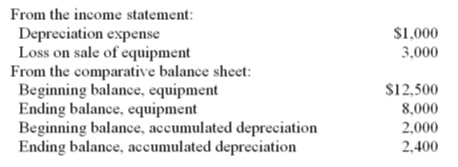Financial accounting assignment 1
Practice Assignment #1
Section I & II
FINANCIAL ACCOUNTING
Please read the directions preceding each section carefully before answering the questions.
- True/False – If the statement is FALSE, you must explain why or correct it to get credit (3 points)
- Most companies use the direct method for disclosing their cash flows from operating rather than the indirect method.
True False (circle one)
If false, explain below or correct above:
- Accounts which retain their balance from one period to the next are referred to as permanent accounts and include balance sheet accounts.
True False (circle one)
If false, explain below or correct above:
- Assets are initially recorded on the balance sheet at the total cost paid to acquire the asset.
True False (circle one)
If false, explain below or correct above:
- The adjusting entry to adjust the unearned revenue account for revenues earned results in an increase in assets and a decrease in liabilities.
True False (circle one)
If false, explain below or correct above:
- Purchasing stock of another company for cash doesn't result in an increase in total assets for the purchasing company.
True False (circle one)
If false, explain below or correct above:
- Revenue is recognized at the time that cash is collected from a customer for services to be provided in the future.
True False (circle one)
If false, explain below or correct above:
- Under the indirect method for preparing cash flows from operations, a decrease in inventory is deducted from net income, because inventory purchases are less than cost of goods sold.
True False (circle one)
If false, explain below or correct above:
- Using cash to purchase office supplies which will be consumed later results in an increase in expenses and a decrease in assets as of the time of purchase.
True False (circle one)
If false, explain below or correct above:
- The payment of interest on a note payable is a cash flow from a financing activity.
True False (circle one)
If false, explain below or correct above:
- Wages to employees incurred but not yet paid at the end of the accounting period are an example of an accrued expense.
True False (circle one)
If false, explain below or correct above:
- Multiple Choice – Circle the correct answer. (4 points)
- On January 1, 2011, the general ledger of Global Corporation included supplies inventory of $1,000. During 2011, supplies purchases amounted to $5,000. A physical count of inventory on hand at December 31, 2011 determined that the supplies inventory was $1,200. How much is the 2011 supplies expense?
$6,000
B. $5,200
C. $4,800
D. $1,000
- A customer purchased and received $5,000 of goods on credit from Discount Paper Supply on September 1. The customer received the bill on September 13 and mailed a $5,000 check on September 30. Discount Paper Supply received the check on October 4. On which of the following dates should Discount Paper Supply record sales revenue?
September 1
B. September 13
C. September 30
D. October 4
- Halbur Company reported the following for its recent year of operation:

No new equipment was purchased during the year. What was the selling price of the equipment?
$3,900
B. $1,000
C. $900
D. $600
- Lab Industries, Inc., issued $50,000 of bonds, paid cash dividends of $8,000, sold long-term investments that it held in other companies for $12,000, received $5,000 of dividend revenue, repurchased some of its own stock from shareholders for $15,000, and purchased new equipment for $19,000. What is the net cash flow from financing activities?
$32,000 inflow
B. $27,000 inflow
C. $47,000 inflow
D. $20,000 inflow
- Which of the following is correct when land costing $20,000 is sold for $29,000? The land was a component of plant and equipment on the balance sheet.
Revenues are credited for $29,000.
B. Cost of goods sold is debited for $20,000.
C. Gain on sale of land is credited for $9,000.
D. Operating income increases $29,000.
- What is the effect on the financial statements when a company fails to adjust the unearned revenue account for revenues earned at year-end?
Net income is understated and assets are understated.
B. Revenues are understated and liabilities are understated.
C. Revenues are understated and stockholders' equity is overstated.
D. Net income is understated and liabilities are overstated.
- At the beginning of April, Warren Corporation's assets totaled $240,000 and liabilities totaled $60,000. During April the following summarized transactions occurred:
Additional shares of stock were sold for $20,000 cash.
A building costing $95,000 was purchased using $10,000 cash and by signing an $85,000 long-term note payable.
Short-term investments costing $9,000 were purchased using cash.
$10,000 was loaned out; the borrower signed a six-month note in exchange for the loan.
How much are Warren's total assets at the end of April?
$335,000
B. $249,000
C. $345,000
D. $250,000
- On December 31, 2011, Krug Company reported stockholders' equity of $280,000 prior to the following adjusting entries:
Depreciation expense was $31,000;
· Accrued service revenues totaled $29,000;
· Accrued expenses totaled $12,000;
· Expired insurance which was prepaid totaled $9,000;
· Rent revenue earned was $7,000; the rent was prepaid by the tenant and credited to unearned rent revenue.
How much is Krug's stockholders' equity after adjusting entries?
- $280,000
B. $262,000
C. $295,000
D. $264,000 - Blazon Corporation's retained earnings increased $79,000 during 2011. Blazon declared $19,000 of dividends. How much was Blazon's 2011 net income assuming that Blazon's stockholders invested an additional $30,000 during 2011?
$98,000
B. $94,000
C. $68,000
D. $64,000
- Allen Company's 2010 income statement reported total revenues, $850,000 and total expenses (including $40,000 depreciation) of $720,000. The 2010 balance sheet reported the following: accounts receivable—beginning balance, $50,000 and ending balance, $40,000; accounts payable—beginning balance, $22,000 and ending balance, $28,000. Therefore, based only on this information, how much was the 2010 net cash inflow from operating activities?
$126,000
B. $166,000
C. $174,000
D. $186,000


